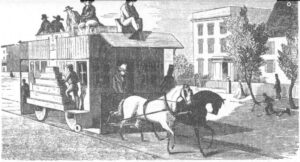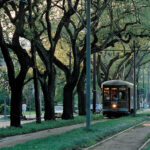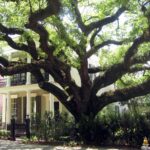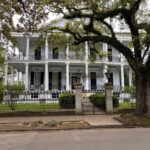The Town of Lafayette
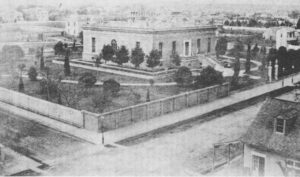
In 1825 Celeste Livaudais, aunt to the flamboyant and rich Bernard de Marigny, scored big time. She had been married to the just-as-rich Jacques (insert a bunch of names here) de Livaudais and got a legal separation. She made bank. As a settlement, she got all of what is today the Garden District. Ex-Madame Livaudais wanted to be a marquise in Paris (I mean, who doesn’t?) so decided to sell her newly gained property to a bunch of rich Americans who were eager to not live with the Frenchies downtown. They got a bargain at $500,000 (in 1825? wow). Of course Celeste kept a little quarter city block for herself, and traipsed off to Paris to hang out with the King.
Almost immediately, an urban designer, who was a lead engineer for Napoleon himself parceled out the area into plots and streets. He made them wide and each plot was at least a quarter block. Soon the rich folks started coming in and built grand houses.
Mikko Macchione
Tour Guide with Unique NOLA Tours and Author of books about New Orleans.
This area was called Faubourg (French for ‘suburb’ kinda) Livaudais. At the time New Orleans itself, downtown was in a political turmoil, the old time Creoles, who tended to be conservative were at odds with the influx of more liberal ‘Americans.’ Thank the stars those days are over. We call them ‘Americans’ with the quotes because they were actually Irish and Germans pouring in to pursue the American Dream.
Not wanting to be part of that mess, Livaudais and two similar former plantation developments got together and formed the town of Lafayette. Why not? They fronted on the river and could build their own economy next door to mighty New Orleans. They named it Lafayette for the great French General who helped with American independence (It’s all there in the musical Hamilton).
For nineteen years the town of Lafayette had its own schools, fire and police force, cemeteries and a bustling riverfront. They even constructed a mule-drawn ‘omnibus’ system connecting to the new Nayades Streetcar (it’s called St. Charles today).
For reasons of politics and greed, the two Municipalities of New Orleans and Lafayette decided to unite into one town. The city flag today has three fleurs-de-lis in remembrance of the unification.
So to break it down, the Garden District started out as developed gated community without any gates. Today we are fortunate enough to have many of the elegant flourishes from that time to remind us of our amazing heritage.

